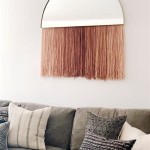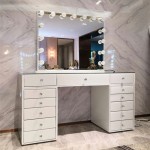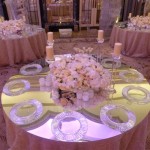Handicap Mirrors for Bathrooms: Accessibility and Design Considerations
Handicap mirrors, also known as ADA (Americans with Disabilities Act) compliant mirrors, are essential components of accessible bathroom design. They are specifically designed to accommodate individuals with mobility impairments, visual impairments, and other disabilities, ensuring usability and independence in restroom facilities. These mirrors are not simply regular mirrors placed at a lower height; they incorporate specific features and installation guidelines to meet accessibility standards and enhance the overall user experience.
The primary goal of incorporating handicap mirrors into bathroom design is to provide a clear and unobstructed reflection for individuals who may be seated in a wheelchair, have a limited range of motion, or experience other physical limitations. By adhering to ADA guidelines and incorporating thoughtful design principles, architects, designers, and facility managers can create inclusive and welcoming restroom environments for all users.
Understanding ADA Requirements for Bathroom Mirrors
The Americans with Disabilities Act (ADA) sets forth specific requirements for bathroom mirrors to ensure accessibility. These requirements address crucial aspects such as mounting height, viewing angle, and reflective surface characteristics. Compliance with these guidelines is not merely a suggestion; it is a legal obligation for public accommodations and commercial facilities.
The ADA Standards for Accessible Design, specifically Section 603.3, outlines the precise specifications for mirrors. The key parameters include:
- Mounting Height: The bottom edge of the reflecting surface of the mirror must be mounted no higher than 40 inches (1015 mm) above the finished floor. This height ensures that individuals seated in wheelchairs can comfortably view their reflection.
- Viewing Angle: The mirror should be positioned to provide a clear and unobstructed view for users of varying heights and mobility levels. This often involves selecting a mirror size that offers a wide reflective area.
- Tilting Mirrors: In some cases, a tilting mirror may be necessary to accommodate a wider range of users. Tilting mirrors allow individuals to adjust the angle of the reflective surface, ensuring optimal visibility. If a tilting mirror is used, it must be able to be adjusted with one hand and maintain its adjusted position.
It's important to note that these are minimum requirements. Designers and facility managers may choose to exceed these standards to further enhance accessibility and user comfort. For instance, installing a larger mirror or incorporating additional features, such as enhanced lighting, can significantly improve the overall restroom experience for individuals with disabilities.
Beyond the precise measurements, the ADA also emphasizes the importance of clear maneuvering space around the mirror. This space must be free of obstructions and sufficiently sized to allow wheelchair users to approach the mirror and maneuver comfortably. This maneuvering space typically extends at least 30 inches by 48 inches.
Regular inspections and maintenance are crucial to ensure continued compliance with ADA standards. Mounting hardware should be checked periodically for stability, and the reflective surface should be cleaned regularly to maintain optimal visibility. Any damage to the mirror should be addressed promptly to prevent potential hazards.
Types of Handicap Mirrors and Their Features
Several types of handicap mirrors are available, each offering unique features and benefits. Choosing the appropriate type depends on the specific needs of the facility, the layout of the restroom, and the desired aesthetic. Understanding the different options is essential for making an informed decision and creating an accessible and functional bathroom environment.
Common types of handicap mirrors include:
- Fixed-Position Mirrors: These mirrors are mounted securely to the wall at a fixed height. They are typically the most cost-effective option and are suitable for restrooms where the overall user population has relatively similar height requirements.
- Tilting Mirrors: As mentioned earlier, tilting mirrors offer adjustability, allowing users to customize the viewing angle. These mirrors are particularly beneficial in restrooms that serve a diverse population, including individuals of varying heights and those who use wheelchairs.
- Full-Length Mirrors: While not exclusively designed for accessibility, full-length mirrors can be helpful for individuals with disabilities who need to view their entire body. When using a full-length mirror, ensure that the bottom edge meets the ADA-mandated height requirement.
- Frameless Mirrors: Frameless mirrors offer a clean and modern aesthetic and can be easier to clean than framed mirrors. They also eliminate the risk of sharp edges, which can be a safety concern.
- Mirrors with Integrated Lighting: These mirrors incorporate built-in lighting, which can enhance visibility and reduce glare. Proper lighting is particularly important for individuals with visual impairments.
- Security Mirrors: In some settings, such as correctional facilities or healthcare facilities, security mirrors may be necessary. These mirrors are typically made of durable materials and are designed to resist tampering.
When selecting a handicap mirror, consider the following factors:
- Size: Choose a mirror size that provides a wide reflective area and allows for comfortable viewing. Larger mirrors generally offer better visibility for all users.
- Material: Mirrors are typically made of glass or acrylic. Glass mirrors offer superior clarity and reflectivity, while acrylic mirrors are more durable and resistant to breakage.
- Frame: The frame of the mirror can significantly impact its aesthetic appeal. Choose a frame that complements the overall restroom design.
- Mounting Hardware: Ensure that the mounting hardware is robust and capable of supporting the weight of the mirror. The hardware should also be tamper-resistant to prevent vandalism or theft.
- Compliance: Verify that the mirror and its installation comply with all applicable ADA guidelines and local building codes.
The choice of mirror type and features should be based on a careful assessment of the specific needs of the facility and the user population. Consulting with an accessibility specialist can help ensure that the chosen mirror meets all relevant requirements and provides an optimal user experience.
Installation Best Practices for Accessible Mirrors
Proper installation is just as important as selecting the right type of handicap mirror. Even the most well-designed mirror will not be effective if it is not installed correctly. Incorrect installation can not only compromise accessibility but also create safety hazards.
The following are some best practices for installing handicap mirrors in bathrooms:
- Accurate Measurements: Before commencing installation, carefully measure the mounting height to ensure compliance with ADA guidelines. The bottom edge of the reflecting surface must be no higher than 40 inches (1015 mm) above the finished floor. Use a level to ensure that the mirror is installed straight and plumb.
- Secure Mounting: Use appropriate mounting hardware to securely attach the mirror to the wall. The hardware should be capable of supporting the weight of the mirror and should be resistant to tampering. Ensure that the wall is structurally sound enough to support the mirror. If necessary, reinforce the wall with additional support.
- Clear Maneuvering Space: Ensure that there is adequate maneuvering space around the mirror to allow wheelchair users to approach and maneuver comfortably. The maneuvering space should be at least 30 inches by 48 inches and should be free of obstructions.
- Accessibility of Controls: If the mirror has adjustable features, such as a tilting mechanism, ensure that the controls are easily accessible and operable with one hand. The controls should also be located within the reach range specified by the ADA.
- Lighting Considerations: Position the mirror in a well-lit area to enhance visibility and reduce glare. Consider using integrated lighting or installing additional lighting fixtures to provide optimal illumination. Ensure that the lighting is evenly distributed and does not create harsh shadows.
- Safety Considerations: Handle the mirror with care during installation to avoid breakage. Wear appropriate safety gear, such as gloves and eye protection. If the mirror is made of glass, take extra precautions to prevent shattering. Consider using safety film on the back of the mirror to contain shards of glass in the event of breakage.
- Professional Installation: If you are not experienced in installing mirrors, it is best to hire a professional contractor. A professional installer will have the necessary tools and expertise to ensure that the mirror is installed correctly and safely.
After installation, inspect the mirror to ensure that it is securely mounted and that all features are functioning properly. Verify that the mounting height is correct and that there is adequate maneuvering space. Clean the reflective surface to remove any smudges or fingerprints.
Regular maintenance is essential to ensure the continued accessibility and safety of the mirror. Periodically inspect the mounting hardware for stability and tighten any loose screws. Clean the reflective surface regularly to maintain optimal visibility. Address any damage to the mirror promptly to prevent potential hazards. Document the installation and maintenance procedures for future reference.
By following these best practices, you can ensure that handicap mirrors are installed correctly and provide a safe and accessible restroom environment for all users. Proper installation is not only a legal requirement but also a demonstration of commitment to inclusivity and accessibility.
Krugg Icon Fixed Tilt Ada Illuminated Mirror Dna Com Led Lighted Mirrors

Backlit Ada Compliant Mirror Now Available With New Lamp Source Aamsco Lighting

Adjustable Led Ada Bathroom Mirror Fixed Tilt Liteharbor Lighting

Wall Mounted Led Ada Bathroom Mirror Fixed Tilt Liteharbor Lighting

Commercial Restroom Mirrors

Adjustable Led Ada Bathroom Mirror Fixed Tilt Liteharbor Lighting

Bathroom Handicap Angled Mirror With White Stainless Steel Metal Frame For The Disable China Wall Mountd Mirrors Made In Com

Paris Mirrors Adirx4828 Sl Dimmable 48 X 28 Inch Adira Handicap Mirror Ada

Handicap Adjustable Mirror 40x60cm Polished Stainless Steel Sapho E

Wheelchair Medicine Chest Mirror Lux Assist Aamsco Lighting








